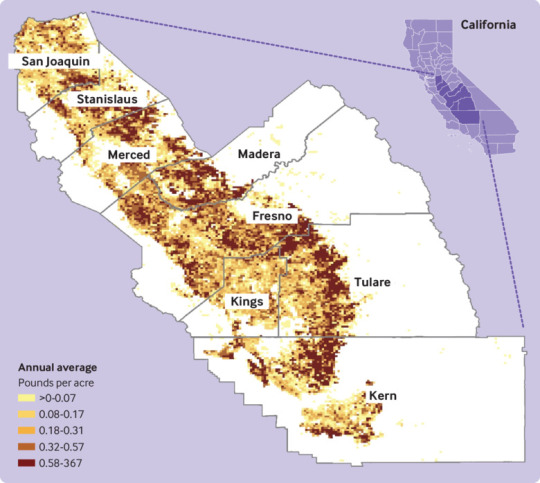#dd 1.01
Text










you're from america? place called the commonwealth, right? i found your tape recorder. how did you come to be in france? a bunch of bad decisions.
THE WALKING DEAD: DARYL DIXON
—1.01; L'âme Perdue
#m#all week at work ive been like. on my day off its daryl dixon hours ONLY. and u know what?#i was right.#anyway. am in love with him. need ep 2 right now#i know its probably out as of 20 minutes ago but i cant see it till my sisters free to watch as well#but. until then maybe episode one will always be my maybe#twddd#twdedit#the walking dead: daryl dixon#dd 1.01#gifs#daryl dixon#wait can i tag ppl? do ppl wanna be tagged in daryl stuff?? becos i would love to be tagged in daryl stuff but im me
967 notes
·
View notes
Text
You have to wonder how much of a kick Matt gets out of making people feel awkward for being insensitive to the blind guy being blind. He seems like he gets a very big kick out of it.
#daredevil#daredevil show#daredevilondisney+#daredevil rewatch#dd 1.01 into the ring#Matt Murdock#blindness#ableism#…especially when he can actually see their entire mortified reaction#like his own inside joke with himself#not quite dead blogging
19 notes
·
View notes
Note
So what's your modlist now post-clean up? Asking because I found some really nice mods from your posts about the game and I'm curious what you found now!
Hoo boy its a lot so read more
Main/Tei-specific modlist below (THIS IS A SSE MOD LIST)
Note: I removed the Alik'r desert mod, it was mainly just a non-vanilla spot for me to test out some new mods n avoid the forced story progress. Also mods marked with a colored text will have NSFW images (namely nudity) uploaded by the author on their pages, fair warning for that! But also let me know if I missed color-coding a mod!
Stuff for the general fixes/improvements/main requirements for most of these mods
Address Library for SKSE Plugins
Bodyslide & Outfit Studio (Required for Rugged Preset)
CBBE + Rugged Preset
Cutting Room Floor
D13 Faster Get Up
Dragon Stalking Fix
ELFX (Main file, main fixes, & True Storms + Alt. Start patch)
Engine Fixes
Face Discoloration Fix
Fuz Ro D'oh
Jaxonz MCM Kicker
NetScriptFramework
PapyrusUtil SE
SKSE
SKYUI + Flashing Savegame fix
SMIM
USSEP
also Wyre Bash+SSEEdit! (Not exactly mods, but good programs to keep you from fucking over your mods/skyrim game)
Mods I'm using for now (A-Z, will note if they are replacement mods)
A Matter of Time
Adamant - A Perk Overhaul (Ordinator replacement, lightweight. Not as intensive/dnd focused as the former, but it's not all that bad!)
Adoptable Argonian Hatching Chases-Starlight
Aetherius - A Race Overhaul (Gets rid of racial powers & you'll need SPID, which i need to get later, to have it apply to NPCs as well)
Alternate Conversation Camera
Alternate Start
Arena - An Encounter Zone Overhaul + Harder Easy Spawns file
Argonian Improvements Horns SSE
Around the Fire
Aurbic Alduin
Authentic Eyes
BAT - Bigger Argonian Tails
Beast Race Bodypaints
BeastHHBB (NPC replacer version) + Interesting Beasts & Beards to Find Them (Uses BeastHHBB on the beast race NPCs from 3DNPCs)
Better Claws & Gauntlets SSE
Better Immersive College of Winterhold
Better Jumping SE
Bigger Tails for Werewolves
Blade and Blunt - A Combat Overhaul (Replacement for Wildcat if I remember correctly! Again, very lightweight/works more on improving vanilla than changing it extremely)
Campfire + Unofficial SSE Update file
Character Creation Overhaul - Races - Birthsigns - Classes - Skills - Specializations - Attributes
Civil War Aftermath SE
Convenient Horses
Civil War Neutrality SSE
Dawnguard Music Overhaul (All modules)
Deadly Dragons SE
Death is Highly Overrated 2021 parts 1 & 2
Digitigrade Beast Races for Skyrim SE
Disease - Sanies Lupinus (Adds the lycanthrope disease that was cut from the game, good for if your PC is a werebeast b4 the main quest starts & also what I use since my werewolf overhaul replacement doesn't have an early lycan option! Doesn't break the companions quest in any way from my experience)
Diverse Skyrim SSE
Diverse Werewolves Collection + Player werewolf replacer
Dominions More Argonians
Draw - A Dueling Mod
Enigma Series -AIO- + Compatibility patch for Talkative Dragons
FAR - Forgotten Argonian Roots
Forgotten Magic Redone (Apocalypse replace # 1 - adds in some more spells)
Guard Dialogue Overhaul SE
Hardcore Saving Overhaul (removes a lot of saving options & only gives you limited ones [i.e. save via rest, drinking a specific potion, or save & exiting via a coin] - just added this one to bump up the difficulty for myself)
Hearthfire Multiple Adoptions and Custom Home Support SE
Honed Metal SSE Updated + Revoiced
Horns Are Forever SE
Hun Lovaas - Replacer Version
Hunterborn
Hypertrichosis -Extra Gore Edition-
Immersive Armors
Immersive Citizens
Immersive College of Winterhold SE
Immersive Good Boy
Immersive Movement
Immersive Patrols SE
Immersive Weapons
Immersive World Encounters SE
iNeed - Food Water and Sleep - Continued
Inigo + Marriage Commentary Patch for Kaidan 2
Interesting NPCS + Patches (CRF for me)+ Cyb's 3DNPC replacer (Note, if you want to use the BHHBB replacer for this mod as well, you have to let it overwrite 2 specific files [0000294C2.nif & 000294c2.dds], I haven't tested if it will mess w/ the non beast race NPCs just yet buut I doubt it will)
Kaidan 2 + Pandorable's Kaidan SE (Soon to be 3 if my assumptions for this November is correct)
Khash the Argonian + Patches
Leviathan Animations (Sprint - 2H High Stance - 2H Normal + Power Attacks - Female Idle walk & run - Male Idle Walk & run)
Lucien - Immersive Fully Voiced Male Follower
Manbeast - A Werewolf Overhaul (Growl replacement, another lightweight mod but very solid)
Mannequin Stay Put
Melodies of Civilization 1.01 + Replacer
Miraak - Dragonborn Follower SE + Dialogue Plus (Probably gonna drop this mod come the S:EC release, I just use it as a way to not become Mora's champion)
Monster race crash fix (for Playable Dragons)
More Tavern Idles compatibility version
My Little Hatchling - Ram-Ku
Mysticism - A Magic Overhaul (Apocalypse replacer #2 - lightweight)
Nether's Follower Framework
PC head Tracking and Voice Type SE (Using PC Head Tracking Voice Pack - BeastFolk [Male Argonian specifically] for the BYO/Custom since it adds more lines for beast folk.)
Play as a Dragon SE - Experimental Version
Practical Female Armors SE
Pride of Valhalla CBBE
Pronouns + They/Them patcher
RaceMenu
Racial Body Morphs SE
Real Bosses + Heavy file (bcus I love pain apparently)
Redguard Noble Armor SSE
Redguard Children Skintone Fix
Run For Your Lives
Sarcastic Player Dialogue SE
Serana Dialogue Edit - SSE
Shout - A Complete Immersive and Dynamic Overhaul of all Shouts
Shut Up Night Mother
Signature Equipment
Simple Forsworn - SE Port
Simple Werewolf Favourite Howls Menu
Simply No Fast Travel
Skald's Mail - A Courier Alternative
SkyHUD
SkyTEST + SkyTEST - Bellyaches HD collection SE + SkyTEST - Better sheep SE + SkyTEST - Mihail's chick replacer and better idle sound SE + SkyTEST - Mihail's gray farm goose SE
Smart No More Stupid Dog Comments
Song of the Green (Auri Follower)
Still - Skyrim Inspired Music -Replacer Version
Tail Armors - BAT compatibility version
Talkative Dragons
The Library of Paarthurnax
The Paarthurnax Dilemma
TK Dodge SE
TK Hitstop SE
Touring Carriages + Immersive Citizens Patch
True Storms + Wet & Cold patch
Ultimate Combat SE
Vampiric Serana
Wearable Lanters + MCM Fix
Werewolf Feral Beast Run + Faster Werewolves file
Werewolf Loot and Activate
Wet and Cold SE
& THERE'S THE WHOLE LIST WHEW
#skyrim mod list#skyrimblogging#i gotta go snooze my head is killing me#hope some of these mods work out for your playthroughs anon!#anonymous
13 notes
·
View notes
Photo




I thought I detected a whiff of v i r t u e in there.
#matt murdock#karen page#foggy nelson#daredeviledit#mattmurdockedit#karenpageedit#foggynelsonedit#marveledit#MCU#marvel#mcuedit#my gifs#1.01#into the ring#daredevil#dd#season 1
241 notes
·
View notes
Text
nadinefrazer replied to your post: Im screaming at the one shot we got of Frank and...
karen is literally a death magnet the poor thing
she has seriously NOT caught a break since 1.01 of DD and also she’s like a vigilante magnet who takes in thugs so
9 notes
·
View notes
Note
i wanna watch the defenders 'cause i like trish and jessica but i've never seen daredevil, lc or iron first. will i be lost?
i would recommend watching at least daredevil season 2 because a lot of the defenders main plot kind of originates there, and iron fist season 1 also has quite a bit of relevant material. trish and jessica have good stuff in defenders 1.01, 1.05 and 1.08, but the overarching plot is to do with the hand and elektra, so dd s2 is kind of a must.
2 notes
·
View notes
Text


THE WALKING DEAD: DARYL DIXON
—1.01: L'âme Perdue
#m#becos i wanna Contribute. but im short on time#anyway. here we are then#twdedit#gifs#dd 1.01#twddd#the walking dead: daryl dixon
214 notes
·
View notes
Text
I can’t help but hear Frank ranting in my head to Matt about knowing a guy had a gun and not getting it away from him the first chance he got, before he rescued the girls, before he did anything else. “Jesus Christ, Red!”
#daredevil#daredevilondisney+#daredevil rewatch#daredevil show#dd 1.01 into the ring#Matt Murdock#frank castle#Matt & frank#gun mention#smh#priorities Matthew!#not quite dead blogging
8 notes
·
View notes
Photo

New Post has been published on https://shop-city.ml/product/lace-up-underwear-women-sexy-lace-bandage-lingerie-corset-push-up-top-underwear-veterschoenen-y502/ #follow4followback #followforfollowback #followforlike #likeforfollow
Lace-up underwear Women Sexy Lace Bandage Lingerie Corset Push Up Top Underwear Veterschoenen # Y502
Trendzone 5/21 пикантные Для женщин кружева белье Трусики стринги трусики нижнее белье трусы Бесплатная доставкаUSD 1.00-1.84/piece
Женский бюстгальтер для коррекции фигуры Нижнее белье женский пуш-ап Глубокий V ультратонкий бюстгальтер на косточках Мягкий кружевной бюстгальтер Бесплатная доставка Y502USD 1.78-3.91/piece
Trendzone 501 Для женщин летние топы без рукавов футболки жилет укороченный Блуза Топ Бесплатная доставкаUSD 3.16-3.62/piece
Босоножки, нижнее белье очаровательные Для женщин бюстгальтер со шлейками эластичные клетка Бюстгальтер Strappy Выдалбливают Бюстгальтер Бюстье Бесплатная доставка # Y50USD 0.90-2.03/piece
Для женщин s Lace-up сексуальное нижнее белье Для женщин выдалбливают эластичный Кейдж Бюстгальтер Бандажное бикини из трикотажных полосок Бюстгальтер Бюстье топ, Бесплатная доставка Y50USD 0.86-1.79/piece
Для женщин s на шнуровке underwearSexy Для женщин девочек аппликации выдалбливают эластичный Кейдж Бюстгальтер Бандажное бикини из трикотажных полосок бюстгальтер Veterschoenen Y50USD 0.84-1.72/piece
Trendzone 5/21 пикантные Для женщин кружева белье Трусики стринги трусики нижнее белье трусы Бесплатная доставкаUSD 1.01-2.01/piece
Trendzone 50 женщин сексуальные кружева Перспектива бедра-чулки подвязки Пояса Подтяжки с бесплатной доставкойUSD 1.55-1.60/piece
Женские сексуальные кружевные бандажные белье корсет с эффектом пуш-ап нижнее белье
Пункт специфика
Украшение: повязка, Аппликации,Кружева
Примечание: чашка = S код B = M C = L D = XL DD = XXL DDD = XXXL
Стиль: каждый день
Тип изделия: бюстгальтер
Форма чашки: 3/4 чашка
Тип фиксации: бесконтактная
Посылка включает: 1 шт. бюстгальтер
Рисунок: Цветочный
Тип застёжки: нет
Материал:Акрил + кружева
Пол: Для женщин
Размер (1 “= 2,54 см)
1. Чтобы убедиться, что вы получите правильный ра��мер, пожалуйста, обратитесь к нашей таблице размеров перед покупкой,
Если вы не уверены в размере, пожалуйста, напишите нам ваши точные измерения тела, так что мы можем дать вам некоторые предложения о том, как выбрать правильный размер, спасибо за ваше понимание
2. Измерение вручную может отличаться на 1-3 см
Размеры: S Под грудью: 64-68 см/25,2-26,8″ Длина: 14,5 см/5,7″ Размеры: M Под грудью: 68-72 см/26,8-28,3″ Длина: 15 см/5,9″ Размеры: L Под грудью: 72-76 см/28,3-29,9″ Длина: 15,5 см/6,1″ Размеры: XL Под грудью: 76-80 см/29,9-31,5″ Длина: 16 см/6,3″
0 notes
Photo

New Post has been published on https://shop-city.ml/product/lace-up-underwear-women-sexy-lace-bandage-lingerie-corset-push-up-top-underwear-veterschoenen-y502/ #follow4followback #followforfollowback #followforlike #likeforfollow
Lace-up underwear Women Sexy Lace Bandage Lingerie Corset Push Up Top Underwear Veterschoenen # Y502
Trendzone 5/21 пикантные Для женщин кружева белье Трусики стринги трусики нижнее белье трусы Бесплатная доставкаUSD 1.00-1.84/piece
Женский бюстгальтер для коррекции фигуры Нижнее белье женский пуш-ап Глубокий V ультратонкий бюстгальтер на косточках Мягкий кружевной бюстгальтер Бесплатная доставка Y502USD 1.78-3.91/piece
Trendzone 501 Для женщин летние топы без рукавов футболки жилет укороченный Блуза Топ Бесплатная доставкаUSD 3.16-3.62/piece
Босоножки, нижнее белье очаровательные Для женщин бюстгальтер со шлейками эластичные клетка Бюстгальтер Strappy Выдалбливают Бюстгальтер Бюстье Бесплатная доставка # Y50USD 0.90-2.03/piece
Для женщин s Lace-up сексуальное нижнее белье Для женщин выдалбливают эластичный Кейдж Бюстгальтер Бандажное бикини из трикотажных полосок Бюстгальтер Бюстье топ, Бесплатная доставка Y50USD 0.86-1.79/piece
Для женщин s на шнуровке underwearSexy Для женщин девочек аппликации выдалбливают эластичный Кейдж Бюстгальтер Бандажное бикини из трикотажных полосок бюстгальтер Veterschoenen Y50USD 0.84-1.72/piece
Trendzone 5/21 пикантные Для женщин кружева белье Трусики стринги трусики нижнее белье трусы Бесплатная доставкаUSD 1.01-2.01/piece
Trendzone 50 женщин сексуальные кружева Перспектива бедра-чулки подвязки Пояса Подтя��ки с бесплатной доставкойUSD 1.55-1.60/piece
Женские сексуальные кружевные бандажные белье корсет с эффектом пуш-ап нижнее белье
Пункт специфика
Украшение: повязка, Аппликации,Кружева
Примечание: чашка = S код B = M C = L D = XL DD = XXL DDD = XXXL
Стиль: каждый день
Тип изделия: бюстгальтер
Форма чашки: 3/4 чашка
Тип фиксации: бесконтактная
Посылка включает: 1 шт. бюстгальтер
Рисунок: Цветочный
Тип застёжки: нет
Материал:Акрил + кружева
Пол: Для женщин
Размер (1 “= 2,54 см)
1. Чтобы убедиться, что вы получите правильный размер, пожалуйста, обратитесь к нашей таблице размеров перед покупкой,
Если вы не уверены в размере, пожалуйста, напишите нам ваши точные измерения тела, так что мы можем дать вам некоторые предложения о том, как выбрать правильный размер, спасибо за ваше понимание
2. Измерение вручную может отличаться на 1-3 см
Размеры: S Под грудью: 64-68 см/25,2-26,8″ Длина: 14,5 см/5,7″ Размеры: M Под грудью: 68-72 см/26,8-28,3″ Длина: 15 см/5,9″ Размеры: L Под грудью: 72-76 см/28,3-29,9″ Длина: 15,5 см/6,1″ Размеры: XL Под грудью: 76-80 см/29,9-31,5″ Длина: 16 см/6,3″
0 notes
Photo

New Post has been published on https://fitnesshealthyoga.com/prenatal-and-infant-exposure-to-ambient-pesticides-and-autism-spectrum-disorder-in-children-population-based-case-control-study/
Prenatal and infant exposure to ambient pesticides and autism spectrum disorder in children: population based case-control study

Abstract
Objective To examine associations between early developmental exposure to ambient pesticides and autism spectrum disorder.
Design Population based case-control study.
Setting California’s main agricultural region, Central Valley, using 1998-2010 birth data from the Office of Vital Statistics.
Population 2961 individuals with a diagnosis of autism spectrum disorder based on the Diagnostic and Statistical Manual of Mental Disorders, fourth edition, revised (up to 31 December 2013), including 445 with intellectual disability comorbidity, were identified through records maintained at the California Department of Developmental Services and linked to their birth records. Controls derived from birth records were matched to cases 10:1 by sex and birth year.
Exposure Data from California state mandated Pesticide Use Reporting were integrated into a geographic information system tool to estimate prenatal and infant exposures to pesticides (measured as pounds of pesticides applied per acre/month within 2000 m from the maternal residence). 11 high use pesticides were selected for examination a priori according to previous evidence of neurodevelopmental toxicity in vivo or in vitro (exposure defined as ever v never for each pesticide during specific developmental periods).
Main outcome measure Odds ratios and 95% confidence intervals using multivariable logistic regression were used to assess associations between pesticide exposure and autism spectrum disorder (with or without intellectual disabilities) in offspring, adjusting for confounders.
Results Risk of autism spectrum disorder was associated with prenatal exposure to glyphosate (odds ratio 1.16, 95% confidence interval 1.06 to 1.27), chlorpyrifos (1.13, 1.05 to 1.23), diazinon (1.11, 1.01 to 1.21), malathion (1.11, 1.01 to 1.22), avermectin (1.12, 1.04 to 1.22), and permethrin (1.10, 1.01 to 1.20). For autism spectrum disorder with intellectual disability, estimated odds ratios were higher (by about 30%) for prenatal exposure to glyphosate (1.33, 1.05 to 1.69), chlorpyrifos (1.27, 1.04 to 1.56), diazinon (1.41, 1.15 to 1.73), permethrin (1.46, 1.20 to 1.78), methyl bromide (1.33, 1.07 to 1.64), and myclobutanil (1.32, 1.09 to 1.60); exposure in the first year of life increased the odds for the disorder with comorbid intellectual disability by up to 50% for some pesticide substances.
Conclusion Findings suggest that an offspring’s risk of autism spectrum disorder increases following prenatal exposure to ambient pesticides within 2000 m of their mother’s residence during pregnancy, compared with offspring of women from the same agricultural region without such exposure. Infant exposure could further increase risks for autism spectrum disorder with comorbid intellectual disability.
Introduction
Autism spectrum disorder comprises severe developmental disorders characterized by atypical socialization, and restricted and repetitive behaviors and interests. Genetics have a role,12 with heritability estimates of 38%3 to 83%,4 but more information is needed about environmental factors operating in early development.3 Prenatal exposures to several types of pesticides have been associated with impaired neurodevelopment,5678 and the few studies that have considered autism spectrum disorder have suggested that organophosphates9 and organochlorines1011 could increase risk.
Experimental in vivo and in vitro studies of autism121314 suggested changes in neuroprotein levels, altered gene expression, and neurobehavioral abnormalities after exposure to certain pesticides.1214 For example, when the organophosphate chlorpyrifos was administered prenatally at subtoxic levels to a mouse model that displays several behavioral traits related to the autism spectrum, male offspring showed delayed motor function maturation and enhanced behavioral features associated with autism spectrum disorder.13
So far, knowledge about pesticide exposure in the real world and risk of autism spectrum disorder is scarce. In this large population based study, we assess prenatal and infant exposure to high use pesticides, which have been a priori selected on the basis of previous evidence for their experimental neurodevelopmental toxicity. Use of these pesticides in an agriculturally intensive region of California, United States, were recorded in the California state mandated Pesticide Use Reporting (CA-PUR) program. These records were integrated in our geographic information system tool, which links exposure records to addresses from birth records of the study population.
Methods
Study design and population
Records of autism spectrum disorder cases were retrieved from the registry maintained at the California Department of Developmental Services (DDS), based on diagnostic data collected by contracted regional centers (https://www.dds.ca.gov/RC/RCList.cfm). We included all individuals with a primary diagnosis of autistic disorder (code 299.00) reported on the DDS client development evaluation report, which implements criteria of the Diagnostic and Statistical Manual of Mental Disorders, fourth edition, revised (DSM-IV-R)15 up to 31 December 2013 (“autistic disorder” is the most severe diagnosis of autism spectrum disorder under DSM-IV criteria).16 Validation studies have established the reliability and validity of the DDS client development evaluation report in California.17 Eligibility for DDS services does not depend on citizenship or financial status, and services are available to all children. We used California birth records data from the Office of Vital Statistics to create a statewide case-control sample of 1998-2010 births. We matched DDS case records to birth records using a probabilistic linkage18 based on child and parental identifiers including first and last name, birth date, and sex. We estimated the probability that two records were for the same person by assigning total linkage scores generated for matches with the National Program of Cancer Registries Link Plus software (linkage rate 86.3%).19 We manually checked cases with borderline scores; the main reason for non-linkage was missing information on birth or DDS records.
Randomly selected controls from birth records were matched to each case 10:1 by birth year and sex. From the statewide sample (n=33 921 cases, n=339 210 controls), we excluded 3401 (10%) case records and 42 519 (12.5%) control records with missing, implausible, or non-viable gestational ages (included range 147-322 days) or birth weights (included range 500-6800 g), and non-singleton births. We also excluded 1296 (0.4%) controls who died before age 6 (identified by linkage to the California death registry).18 We restricted our sample to the eight major agricultural counties (San Joaquin, Stanislaus, Merced, Madera, Fresno, Kings, Tulare, and Kern); 38 331 participants (2961 cases and 35 370 controls) resided here at the time of birth and diagnosis. Although the CA-PUR covers the state of California, the mandatory reporting reflects agricultural use pesticides (see supplemental eMethods), which has a different spatial resolution from other pesticide use recorded in the Pesticide Use Reporting system. In urban areas (such as on structures and right of way applications or near roadway applications), non-agricultural pesticide use is most common but this is only reportable to the Pesticide Use Reporting at the county level (low spatial resolution); thus variables that estimate pesticide exposure for urban areas would be expected to result in markedly higher exposure misclassification.
We distinguished cases according to comorbid intellectual disability (in our study period recorded as “mental retardation” and diagnosed according to DSM-IV criteria corresponding to ICD-9 (international classification of diseases, 9th revision)). Information on pregnancy characteristics including gestational age, birth weight, pregnancy complications, and sociodemographics (maternal/paternal age, race/ethnicity, education) was retrieved from birth records.
Pesticide exposure
Residential birth addresses, as listed on birth certificates, were geocoded by our open source geocoder (historical address information was not available).20 CA-PUR21 includes information on all agricultural pesticide applications with the date, location, and amount of active ingredient applied (see supplemental eMethods). CA-PUR reports were combined with land use survey information from the California Department of Water Resources, which provides the location of specific crops, in a geographic information system-based computer model to estimate pesticide exposure from agricultural applications (technical details published elsewhere22). Briefly, for each pesticide, we summed pounds applied per acre (1 acre=4046.9 m2) per month within a 2000 m radius of each residential address. Our geographic information system tool generated calendar month averages, which we then used to generate developmental period-specific averages (for the three months before gestation, each month of gestation/gestation, and the first year of life) using weights according to the developmental period/gestational days covered by a calendar month. For sensitivity analyses, we also used a 2500 m radius in the same manner. The length of the gestational period for controls was truncated to the length of the matched cases to ensure comparable exposure periods. We defined exposure as any versus none to a specific substance during a specific developmental period; we chose this method to avoid making assumptions about the relative toxicity of agents, shape of the association, or the exposure potential due to presence at the time of application. It is, however, possible that this approach generates non-differential exposure error and underestimates effects.
We a priori decided to select from among 25 most used pesticide substances with peer reviewed published reports of neurodevelopmental interference, leaving 11 pesticides for analysis (classifications shown in eTable 1). These substances included glyphosate,23242526 chlorpyrifos,927 diazinon,282930 acephate,313233 malathion,333435 permethrin,69 bifenthrin,93336 methyl bromide,3738 imidacloprid,3940 avermectin,4142 and myclobutanil.1443
Statistical analysis
Tetrachoric/Spearman correlations (binary/continuous) of pesticide exposures were examined within and between developmental periods. Pesticide use over time was plotted; maps were drawn using ArcGIS 10.4 (ESRI). Odds ratios and 95% confidence intervals were estimated for associations between developmental period-specific pesticide exposures and autism spectrum disorder with unconditional logistic regression. We adjusted all models for the matching variables sex and year of birth, and selected potential confounders on the basis of previous knowledge.1044 These potential confounders included maternal age, indicators of socioeconomic status (that is, maternal race/ethnicity and education), and nitrogen oxides44 (NOx; pregnancy average) as a marker of traffic related air pollution. For air pollution assessment, we used the California Line Source (CALINE4) emissions model, a modified Gaussian dispersion model of local gasoline and diesel vehicles emissions estimated for 1500 m distance from the residential address based on traffic volume, roadway geometry, vehicle emission rates, and meteorological conditions (wind speed/direction, temperature, atmospheric stability, and mixing heights).454647
While we estimated parameters for each pesticide in separate models because of collinearities, we also explored multi-pesticide models for two or three selected pesticides for substances that showed associations with autism spectrum disorder in single pesticide models and belonged to different chemical classes. For those pesticides with more than one substance per class (organophosphates, pyrethroids), we selected a representative chemical (eg, chlorpyrifos for organophosphates) based on the strongest previous evidence for neurodevelopmental toxicity.48 To further adjust for coexposure, we adjusted for 11 pesticides in logistic models; in sensitivity analyses, a semi-Bayesian approach was used as described elsewhere.49 There was little difference in effect estimates between the fully adjusted conventional logistic and the hierarchical modeling approach, so we present the logistic modeling results only.495051
We also stratified analyses by autism spectrum disorder with or without comorbid intellectual disability to assess risk in more severely impaired individuals separately. We conducted sensitivity analyses adjusting for additional variables including maternal birth place (US v non-US); residence in urban or rural areas52; socioeconomic status categories based on census data related to income, education, and occupation53; source of payment for delivery (indicator of socioeconomic status); and preterm birth. None of these variables changed the estimates of interest by more than 5%, thus they were not retained in final models.54 Sensitivity analyses also included restricting to term births, and stratifying by sex. Analyses were conducted with SAS 9.3.
Patient and public involvement
No patients were directly involved in setting the research question or the outcome measures, nor were they involved in developing plans for design or implementation of the study. However, the study responds to concerns by the families of patients with autism that environmental toxic exposures in early life are suspected to contribute to risks for autism spectrum disorder. There are plans to disseminate the results of the research to the relevant patient community. Affected families are thanked in the acknowledgments.
Results
Baseline characteristics and exposure
In our sample, individuals with autism spectrum disorder were mainly male (>80%), had older mothers, and had mothers who had completed more years of education than control mothers (table 1). Correlations between several pesticides in the same or across developmental periods were moderate to high (rt=0.45-0.85; eTable 2). In figure 1, we present a map of the study area showing pesticide applications for the most used substance glyphosate as an example.
Table 1
Study population characteristics by autism spectrum disorder status and population controls in the Central Valley, CA*

Fig 1
Pesticide application of glyphosate in Central Valley, CA, 1998-2010
Association between autism spectrum disorder and exposure to pesticides, coadjusted for developmental period exposures
For all cases of autism spectrum disorder combined, coadjusted for developmental period-specific exposures (three months before pregnancy, during pregnancy, and during the first year of life), odds ratios were increased for pregnancy exposure to most substances. Associations were strongest for chlorpyrifos (1.15; 95% confidence interval 1.02 to 1.29), diazinon (1.14; 1.02 to 1.28), and avermectin (1.14; 1.03 to 1.26). Related to first year of life exposure, most odds ratios were close to one, and only the odds ratios for bifenthrin, malathion, and glyphosates were slightly raised (table 2). For autism spectrum disorder with intellectual disability comorbidity, coadjustment for the exposures in all three periods resulted in attenuated effect estimates during and before pregnancy, while odds ratios became more pronounced for exposures in the first year of life, particularly for glyphosate (1.60; 1.09 to 2.34), diazinon (1.45; 1.11 to 1.89), malathion (1.29; 1.00 to 1.65), and bifenthrin (1.33; 1.03 to 1.72; table 2). Exposure in the three months before pregnancy (indicating exposure just before or around conception) had weaker associations with autism spectrum disorder than exposure during pregnancy or the first year of life, after exposure period coadjustment (table 2, eTable 3). We saw variation in exposure between developmental periods to each pesticide considered, likely due to annual and seasonal changes in application rates (eg, for permethrin, among the controls, 1.5% were solely exposed in the three months before pregnancy, 4.8% were exposed only during pregnancy, 7.6% were exposed only in the first year of life, and 12.1% were exposed in all three periods; eTable 4). For exposures by trimester, no clear patterns were identified (data not shown).
Table 2
Odds ratios and 95% confidence intervals* for association between pesticide exposure and all cases of autism spectrum disorder (ASD) combined and those with intellectual disability comorbidity, coadjusted for developmental period of pesticide exposure, by pesticide substance
Association between prenatal or infant exposure to pesticides and autism spectrum disorder
For all cases of autism spectrum disorder, considering the pregnancy and infant exposures separately, exposure during pregnancy was associated with about a 10% increase in adjusted odds ratios for glyphosate (1.16; 95% confidence interval 1.06 to 1.27), chlorpyrifos (1.13; 1.05 to 1.23), diazinon (1.11; 1.01 to 1.21), malathion (1.11; 1.01 to 1.22), avermectin (1.12; 1.04 to 1.22), and permethrin (1.10; 1.01 to 1.20). Also adjusting for all 11 pesticides resulted in attenuation of associations. However, odds ratios for glyphosate and avermectin remained elevated for exposure during pregnancy, while odds ratios for the remaining pesticides were close to one, and the odds ratio for imidacloprid fell below one (table 3).
Table 3
Odds ratios and 95% confidence intervals for association between all cases of autism spectrum disorder combined and pesticide exposure during pregnancy and first year of life in logistic regression models, by pesticide substance
Association between prenatal or infant exposure to pesticide and autism spectrum disorder with intellectual disability
Among cases of autism spectrum disorder with intellectual disability, odds ratios had greater increases (by 30-40%) in pregnancy and infancy for glyphosate, chlorpyrifos, diazinon, permethrin, methyl bromide, and myclobutanil when considering the pregnancy and infant periods separately (table 4). Among cases without intellectual disability (about 85% of cases), estimated odds ratios were similar to those reported for the models analyzing all cases of autism spectrum disorder (eTable 5).
Table 4
Odds ratios and 95% confidence intervals for association between autism spectrum disorder with intellectual disability comorbidity and exposure to pesticides during pregnancy and first year of life in logistic regression models
Multi-pesticide models
In multi-pesticide models with two or three pesticides, most odds ratios were above one for all cases of autism spectrum disorder combined even though several confidence intervals widened (table 5). For autism spectrum disorder with intellectual disability and pesticide exposure during the first year of life, estimated associations were pronounced for glyphosate (odds ratio 1.34; 95% confidence interval 1.03 to 1.74) and permethrin (1.31; 1.07 to 1.62); also including chlorpyrifos or myclobutanil changed little in the associations for glyphosate and permethrin, whereas the estimated odds ratios for chlorpyrifos or myclobutanil were null (table 5).
Table 5
Multi-pesticide models of association among all cases of autism spectrum disorder combined and those with intellectual disability comorbidity, and exposure of selected pesticides from different chemical classes during pregnancy and the first year of life*
Sensitivity analyses: buffer size, sex stratification, area type, and term birth restriction
In sensitivity analyses, we examined associations between autism spectrum disorder and pesticide exposure within a 2500 m distance from home; findings were similar or slightly stronger than those for the 2000 m distance (eTable 6). Stratifying by sex, associations among male individuals were similar as seen for the entire sample, with increased odds ratios for glyphosate, chlorpyrifos, diazinon, permethrin, and avermectin. Among female individuals, the findings were similar but the 95% confidence intervals were wider due to the smaller number of cases (eTable 7). Restricting to term births only or adjusting for area type (urban, rural) did not change our findings appreciably (data not shown).
Discussion
To our knowledge, this study is the largest to investigate pesticide exposure and autism spectrum disorder so far, and the first to also consider the disorder with intellectual disability comorbidity. Our results indicate small to moderately increased risks for the disorder in offspring with prenatal exposure to the organophosphates chlorpyrifos, diazinon, and malathion, the pyrethroids permethrin and bifenthrin, as well as to glyphosate, avermectin, and methyl bromide compared with offspring of women without such exposure within 2000 m of their residence. For autism spectrum disorder with comorbid intellectual disability, risks were more pronounced for exposures during the first year of life. Importantly, the pesticides considered for analysis were selected a priori on the basis of experimental evidence indicating neurodevelopmental toxicity. Thus, our findings support the hypotheses that prenatal and infant pesticide exposures to these substances increase the risks for autism spectrum disorder, and exposures in infancy could contribute to risks for more severely impaired phenotypes with comorbid intellectual disability.
Comparison with other studies
Environmental toxicants have been suspected to increase the risk of autism spectrum disorder, with available research suggesting associations between air pollution and the disorder.44555657 Studies examining pesticides and the disorder are rare. In a California study of DDS case records (n=465) linked to birth records from 1996-98, researchers assigned exposures during pregnancy using CA-PUR, similar to our approach; findings suggested that grouped organochlorines were strongly associated with risks of pregnancy (odds ratio 6.1 (95% confidence interval 2.4 to 15.3)).10 Another study included 486 cases of autism spectrum disorder and assigned pounds per active ingredient in aggregated chemical classes (organophosphates, organochlorines, pyrethroids, carbamates), also derived from CA-PUR data for applications within 1250-1750 m from the home address9; findings suggested a 60% increased risk for the disorder related to organophosphate exposures during pregnancy. Children of mothers living near agricultural pyrethroid applications just before conception or during their third trimester also were at greater risk for autism spectrum disorder and general developmental disability (odds ratios ranging from 1.7 to 2.3).9 In a smaller case-control study measuring organochlorines and polychlorinated biphenyls in banked mid-pregnancy serum (from 2000 to 2003), higher concentrations for several compounds in cases than in general population controls were seen.11
We did not consider organochlorines because many have been banned from use in California for decades. In a high risk, mother-child study of 46 cases of autism spectrum disorder, prenatal urinary dimethylthiophosphate was associated with the disorder in girls but not in boys58; in our study, we saw little evidence of a sex difference in effects. Overall, the few earlier studies corroborate our findings for most of the pesticides we examined. While all the 11 pesticides were a priori selected among high use substances, based on prior evidence for neurodevelopmental toxicity, odds ratios were increased for several but not all substances in our analyses. Possible explanations could include different mechanisms related to the development of autism spectrum disorder, bioavailability of the chemical (eg, in homes resulting from ambient applications and based on chemical properties), and the application practices in these real world scenarios. Different combinations of substances or mixture exposures might also result in synergistic effects, including those leading to a selective survival of the fetus.59
Although environmental exposure studies considering autism spectrum disorder are rare, organophosphates and pyrethroids have been related to neurodevelopmental and cognitive impairments in children in previous studies.576061 Decrements in IQ scores at age 7 have been associated with prenatal residential proximity to agricultural use of organophosphates and pyrethroids, acephate, chlorpyrifos, and diazinon,5 in line with our findings. Pyrethroid metabolites in maternal urine during pregnancy and in child urine were associated with worse behavioral scores assessed in 6 year old children.62 Thus, human studies corroborate the adverse effect of early developmental exposure to ambient pesticides on child neurodevelopment, consistent with our findings.
Additional evidence is provided by experimental studies. Mice exposed in utero to chlorpyrifos showed postnatal deficits in social behavior and restricted interests while the behavior of the dams (maternal mice) was not affected.63 Prenatal exposure to chlorpyrifos enhanced brain oxidative stress and prostaglandin E2 synthesis in a mouse model of autism.64 Oxidative stress and dysregulated immune responses are implicated in organophosphate related toxicity and pathogenesis of autism spectrum disorder, suggesting a possible mode of action.13 Coexposing mice shortly after birth to cypermethrin (a pyrethroid) and endosulfan altered levels of neuroproteins and resulted in neurobehavioral abnormalities.12 Gene expression of mouse cortical neurons was altered by certain fungicides and resembled transcriptional changes thought to underlie development of autism spectrum disorder.214 Translational research connecting toxicological and animal studies with findings from epidemiological studies is needed to identify the specific modes of action of pesticides relevant for the pathogenesis of autism spectrum disorder.6566676869
Residential proximity to pesticide applications during pregnancy has been shown to be a valid indicator of prenatal exposure.70717273 Pesticides, including organophosphates, have been identified in serum, indoor air, and dust in homes in agricultural areas in California.7475 Elevated levels in five of seven pesticides applied within 1250 m of homes according to Pesticide Use Reporting records were also measured in dust from such homes.76 Our exposure assessment method using the geographic information system tool has been validated against serum concentrations of organochlorines,77 and specific methylation patterns found among those with organophosphate exposure,78 and can be considered a valid proxy for prenatal exposures.
Strengths and limitations of our study
A strength of our study was our pesticide exposure assessment tool; it can estimate exposures for multiple substances with short half-lives for which frequent measurements of metabolites would be necessary but not feasible in a population based study of the size needed to investigate the risk of autism spectrum disorder. California’s mandatory Pesticide Use Reporting program is recognized as the most detailed and comprehensive worldwide. Thus, we were able to rely on agricultural application records of specific pesticides with high spatial and temporal resolution, which we believe is a strength that could have reduced exposure misclassification, because we relied on Pesticide Use Reporting information based on the date of application using a relatively fine spatial scale (a buffer of 2000 m) around the residential address. We also relied on the gestational age and birth date to construct individual exposure estimates corresponding to different developmental periods. We still have to assume that individuals were present at their residences around the application dates and that these applications resulted in exposures in the targeted periods only and did not get trapped in or around homes over extended periods of time. Our registry based design avoided participation bias due to self selection and recall bias of parents (which is an issue in case-control studies that rely on self reports of past exposures).
Although our ability to pinpoint one or more specific substances was limited by the collinearity of pesticide exposure owing to agricultural practices, we could capture the real life scenario of populations living in agricultural areas; typically, a variety of substances are used over several weeks or months. Sensitivity analyses using the 2500 m radius buffer further corroborated and even strengthened our results. Simultaneous exposures to frequently used pesticides are likely in residences near agricultural applications, and some of our findings could reflect adverse effects of typical exposure mixtures or coexposures. Multi-pesticide models coadjusted for all pesticides or for two or three substances were generally consistent with our single pesticide models. We present results from real world exposure scenarios while being cognizant of issues of collinearity, sparse data, or overly restrictive modeling assumptions.
A limitation was that we only had birth addresses available and that 9-30% of families could have moved during pregnancy.79 However, most moves in pregnancy have been found to be local (<10 km), and misclassification would be expected to be non-differential because moving residence would happen before diagnosis; thus any bias would likely be toward the null. We also lacked exposure information on pesticides from other sources such as diet or occupation, potentially resulting in underestimation of total exposure if these were associated with residential exposures (eg, women who work and live on farms); however, this would have been similar for cases and controls and most likely to have resulted in attenuation of risk estimates toward the null.54 We also lacked information about passive and active smoking. However, pregnancy smoking rates are very low in California (<2%),80 and smoking in public places has been banned since the 1990s. Even though we had detailed information on potential confounders, and sensitivity analyses did not change our findings, uncontrolled residual confounding always remains a concern.
Conclusions
Our findings suggest that risk of autism spectrum disorder increases with prenatal and infant exposure to several common ambient pesticides that have been shown to affect neurodevelopment in experimental studies. Further research should be translational and integrate experimental and epidemiological approaches to further elucidate underlying mechanisms in the development of the disorder. However, from a public health and preventive medicine perspective, our findings support the need to avoid prenatal and infant exposure to pesticides to protect early brain development.
What is already known on this topic
Common pesticides have been previously shown to cause neurodevelopmental impairment in experimental research
Environmental exposures during early brain development are suspected to increase risk of autism spectrum disorders in children
What this study adds
Prenatal or infant exposure to a priori selected pesticides—including glyphosate, chlorpyrifos, diazinon, and permethrin—were associated with increased odds of developing autism spectrum disorder
Exposure of pregnant women and infants to ambient pesticides with a potential neurodevelopmental toxicity mode of action should be avoided as a preventive measure against autism spectrum disorder
This is an Open Access article distributed in accordance with the Creative Commons Attribution Non Commercial (CC BY-NC 4.0) license, which permits others to distribute, remix, adapt, build upon this work non-commercially, and license their derivative works on different terms, provided the original work is properly cited and the use is non-commercial. See: http://creativecommons.org/licenses/by-nc/4.0/.
Source link
0 notes
Text
Chemical Constituents from the Leaves of Machilus Bombycina King Ex Hook.f.-JuniperPublishers
Journal of Chemistry-JuniperPublishers
Abstract
Machilus bombycina King ex Hook. f. (Lauraceae) is found in China and India. Its leaves are used to cure pimples and rheumatism. Column chromatography of a methanolic extract of the leaves of M. bombycina afforded 8, 21-dihydroxylanost-5, 25-dien-3-olyl behenate (1) and 5,7-dihydroxy-3', 4'-dimethoxyflavanone-7-O-a-D-glucopyranosyl-(6''^1''')-a-D-rhamnopyranoside (2) as the new phytoconstituents.
a.Results and Discussion: Compound 1, named 8, 21-dihydroxylanostdien-3-olyl behenate, responded positively to Liebermann-Burchardt test for triterpenoids and showed IR absorption bands for hydroxyl groups (3510, 3416 cm-1), ester function (1721 cm-1), unsaturation (1640 cm-1) and long aliphatic chain (727 cm-1). On the basis of mass and 13CNMR spectra the molecular ion peak of 1 was determined at m/z 780 consistent with a molecular formula of a lanostanyl ester, C52H92O4. The ion fragments arising at m/z 457 [C1'-O fission, C30H49O3]+, 339[M-457, CH3(CH2)20COO]+, 440 [457-OH]+, 127 [C17-C20 fission, C8H15O side chain]+ and 313 [440-side chain, C30H48O3]+ indicated that the attachment of a behanate group linked to the lanostandiene unit possessing a C8 side chain with a hydroxyl group and a vinylic bond. The 1H NMR spectrum of 1 showed a one-proton multiplet at 6 5.37 assigned to vinylic H-5, two one-proton signals at 6 4.92 and 4.90 due to exocyclic methylene H2-26 protons, a one-proton double doublet at 6 4.38 with coupling interactions of 5.3 and 9.5 Hz attributed to oxymethine H-3a proton, a two-proton doublet at 6 3.21 (J=6.5 Hz) accounted to hydroxymethylene H2-21 protons, six three-proton singlets between 6 1.92-1.01 accommodated to tertiary C-18 to C-30 methyl protons and a three-proton triplet at 6 0.83 (J=6.1 Hz) ascribed to primary C-22' methyl protons.
The other methylene and methine protons resonated as multiplets from 6 2.72 to 1.55 and as a broad signal at 6 1.28 (36 H). The 13C NMR spectrum of 1 showed signals for ester carbon at 6 173.16 (C-1'), vinylic carbons between 6 142.97-116.13, oxymethine carbon at 6 79.30 (C-3), hydroxymethylene carbon at 6 63.06 (C-21), and methyl carbons from 6 21.09 to 14.04. The 1H and 13C NMR spectral data of the triterpenic unit of 1 were compared with the reported data of lanostene-type triterpenoids [1,2]. Acid hydrolysis of 1 yielded behenic acid, m. p. 79 - 80 °C. On the basis of above discussion the structure of 1 has been elucidated as 8,21-dihydroxylanost-5,25-dien-3-olyl behenate, a new lanostane type- triterpenic ester.
Compound 2, named 3',4'-dimethoxyeriodictyol 7-O-glucorhamnoside, responded positively to phenolic and glycosidic tests and had UV absorption maxima at 287 and 328 typical for a flavanone derivative. It showed a bathochromic shift of 40 nm on addition of AlCl3 and AlCl3/HCl suggesting the presence of a chelated hydroxyl function at C-5. Its IR spectrum disclosed a characteristic absorption for the conjugated carbonyl group (1668 cm-1) and hydroxyl groups (3510, 3418, 3217 cm-1). On the basis of its mass and 13C NMR spectra the molecular ion peak of 2 was determined at m/z 624 consistent with a molecular formula of a flavonoid diglycoside, C29H36O15. The important ion peaks generated at m/z 609 [M - Me]+, 581 [609 - CO]+, 147 [C/'' - O fission, C6H11O4]+, 477 [M - 147]+, 326 [C7 - O fission, C^H^O^ , 298 [M - 326, C17H14O5]+ and 315 [C1'' - O fission, C17H15O6]+ supported that a dihexoside unit was linked with the ring A of the flavanone. The ion fragments produced at m/z 300 [315-Me]+, 253 [315 - 2 x OMe]+, 164 [C34-C2O fission]+ and 150 [C^-C^ fission]+ indicated the presence of two methoxy groups in ring B and methylene protons at C-3.
The 1H NMR spectrum of 2 showed an ABX system of resonances as one-proton double doublets at 6 5.56 (J = 3.2, 12.9 Hz, H-2), 3.19 ( J = 2.8, 17.0 Hz, H2-3a) and 2.81 (J = 3.2, 12.9 Hz, H2-3b) characteristic of oxymethine H-2 and methylene H2-2 eq and H2-2 ax, respectively, of a flavanone moiety?. Four one-proton doublets at 6 7.01 (J = 2.8 Hz), 6.21 (J = 2.0 Hz), 6.17 (J = 2.0 Hz), 6.96 (2 = 8.4 Hz), and a one-proton double doublet at 6 6.99 (J = 2.8, 8.4 Hz) were ascribed to meta-coupled H-2', H-8 and H-6, ortho-coupled H-5' and meta-ortho-coupled H-6' protons, respectively. Two one-proton doublets at 6 5.48 (J = 4.8 Hz) and 5.27 (J = 5.3 Hz), a three-proton doublet at 6 1.21 (J = 7.2 Hz) and two three- proton broad signals at 6 3.82 and 3.44 were accounted correspondingly to anomeric H-1'' and H-1''', secondary methyl H3-2''' of rhamnose unit and two methoxy protons.
The 13C NMR spectrum of 2 displayed 29 signals including a carbonyl carbon of a flavanone at 6 197.03 (C-4), oxymethine at 6 78.41 (C-2), methylene carbon of the flavanone at 6 42.23 (C-3), methoxy carbons at 6 55.60 and 58.57, anomeric carbons at 6 100.56 (C-1'') and 96.31 (C- 1'''), methyl carbon at 6 17.81 (C-6''') and other sugar carbons between 6 76.20-65.97. The DEPT spectrum of 2 exhibited the presence of three methyl, two methylene, seven methine and eight quaternary carbons. The existence of the oxymethylene H2-6'' proton signal in the deshielded region as a doublet at 6 3.23 (J = 8.4 Hz, H2-6'') and its C-6'' carbon signal at 6 65.97 (C-6'') suggested (6''^!'") linkage of the sugar moieties.
Acid hydrolysis of 2 yielded dimethoxyeriodictyol, D-glucose, Rf 0.18 (n-butanol-acetic acid-water, 4:1:5) and D-rhamnose, Rf 0.86 (n-butanol- N acetic acid-water, 4:1:1.6). On the basis of these evidences the structure of 2 was formulated as 5,7-dihydroxy-3',4'-dimethoxyflavanone-7-O-a-D- glucopyranosyl-(6''^1''')-a-D-rhamnopyranoside,a new flavanone diglycoside.
Conclusion: Phytochemical investigation of a methanolic extract of the leaves of Machilus bombycina afforded a lanostene-type3-olyl behenate and a flavanone-7-O-a-D-glucopyranosyl (6''^1''')-a-D-rhamnopyranoside. This work has enhanced understanding about the phytoconstituents of these plants. These secondary metabolites can be used as analytical markers for quality control of these herbal drugs.
Keywords: Machilus Bombycina Leaves; Chemical Constituents; Isolation; Characterization
Introduction
Machilus Bombycina King ex Hook. f. (Lauraceae), known as som, is distributed in China, India and other south eastern countries. It is one of the primary food plants of Antheraea assama Westwood, the silkworm that produces muga or golden colour natural silk. Its leaf paste is applied to relieve rheumatism. Juice of the leaves of M. bombycina and Achyrenthus aspera is applied to cure pimples [3]. Chlorogenic acid, phytic acid, tannins, catechol, morin, gallic acid, p-sitosterol and its 3-O-glucoside are reported from the leaves [4]. The plant essential oil was mainly consisted of decanal, 11-dodecenal and dodecanal [5]. The major constituents of the flower oil were caryophyllene oxide, (E)-nerolidol, 11-dodecenal and 11-dodecenoic acid. The fruit oil was composed of the furanoid forms of trans- and cis- linalool oxides [6,7]. The manuscript describes isolation and characterization of one each of triterpenic ester and flavanone glycoside from the leaves of M. bombycina.
Extraction and Isolation
The leaves of M. bombycina (1 kg), procured from Dibrugarh, Assam were coarsely powdered and extracted exhaustively separately with methanol in a Soxhlet apparatus. The extracts were concentrated under reduced pressure to get a dark brown mass (115.6). The dried residue (100 g) was dissolved in minimum amount of methanol and adsorbed on silica gel column grade (60-120 mesh) to prepare a slurry. It was air-dried and chromatographed over silica gel columns loaded in chloroform. The column was eluted with chloroform and chloroform - methanol mixtures to isolate the compounds 1 and 2.
a. 8,21-Dihydroxylanostdien-3-olyl behenate (1):Elution of the column with chloroform-methanol (49:1) produced colorless crystals of 1, yield 163 mg, m. p. 233-235 °C; IR v (KBr): 3510, 3416, 2918, 2854, 1721, 1640, 1461, 1373,max v J1272, 1123, 727 cm-1; ^ NMR (CDCl3): 5 5.37 (1H, m, H-5), 4.92 (1H, s, H2-26a), 4.90 (1H, s, H2-26b), 4.38 (1H, dd, J = 5.3, 9.5 Hz, H-3a), 3.21 (2H, d, J = 6.5 Hz, H2-21), 1.92 (3H, brs, Me-27), 1.21 (3H, s, Me-28), 1.19 (3H, brs, Me-29), 1.16 (3H, brs, Me-19), 1.14 (3H, brs. Me-30), 1.01 (3H, brs, Me-18), 2.72 (2H, m, H2-7), 2.02 -1. 33 (21H, m, 9 x CH2, 3 x CH), 2.35 (2H, t, J = 7.5 Hz, H2-2’), 1.55 (2H, m, H2-3’), 1.28 (36 H, brs, 18 x CH2), 0.83 (3H, t, J = 6.1 Hz, Me-22'); 13C NMR (CDCl3): 5 39.34 (C-1), 25.75 (C-2), 79.30 (C- 3), 42.32 (C-4), 142.97 (C-5), 121.71 (C-6), 28.26 (C-7), 71.81 (C- 8), 50.12 (C-9), 36.79 (C-10), 23.07 (C-11), 29.13 (C-12), 45.42 (C-13), S6.76 (C-14), 33.94 (C-1S), 31.60 (C-16), S9.SS (C-17),11. 79 (C-18), 21.09 (C-19), 30.79 (C-20), 63.06 (C-21), 37.25 (C-22), 24.14 (C-23), 42.83 (C-24), 140.74 (C-2S), 116.13 (C-26),19.40 (C-27), 19.1S (C-28), 19.04 (C-29), 18.79 (C-30), 173.16 (C-1'), 56.05 (C-2'), 47.87 (C-3'), 30.68 (C-4'), 29.72 (C-5'), 29.69 (C-6'), 29.64 (C-7'), 29.45 (C-8'), 29.28 (C-9' to C-14'), 29.13 (C- 15' to C-18'), 27.23 (C-19'), 24.31 (C-20'), 21.11 (C-21'), 14.04 (C-22'); ESI MS m/z (rel. int.): 780 [M]+ (C52H92O4) (16.2), 457 (12.5), 440 (20.5), 339 (32.8), 313 (31.8), 127 (23.6) (Figure 1).
b. 3',4'-Dimethoxyeriodictyol 7-O- glucorhamnoside (2): Elution of column with chloroform-methanol (3:1) furnished yellow crystals of 2, yield 155 mg, m.p.174-176°C, UV Amax (MeOH): 287, 328 nm; IR Ymax (KBr): 3510, 3418, 3217, 2927, 2835, 1668, 1601, 1453, 1405, 1326, 1127, 1076 cm- ^ NMR (DMSO-d6): 5 7.01 (1H, d, J=2.8 Hz, H-2'), 6.99 (1H, dd, J=2.8, 8.4Hz, H-6'), 6.96 (1H, d, J=8.4 Hz, H-5'), 6.21 (1H, d, J=2.0 Hz, H-8), 6.17 (1H, d, J=2.0 Hz, H-6), 5.56 (1H, dd, J=3.2, 12.9 Hz, H-2), 3.19 (1H, dd, J=2.8, 17.0 Hz, H2-3a), 2.81 (1H, dd, J=3.2, 12.9 Hz, H2-3b), 3.82 (3H, brs, OMe), 3.44 (3H, brs, OMe), 5.48 (1H, d, J=4.8 Hz, H-1''), 4.84 (1H, m, H-5''), 4.71 (1H, dd, J=4,8, 6.4 Hz, H-2''), 3.69 (1H, m, H-3''), 3.42 (1H, m, H-4''), 3.23 (2H, d, J=8.4 Hz, H2-6''), 5.27 (1H, d, J=5.3 Hz, H-1'''), 4.79 (1H, m, H-5'''), 4.58 (1H, m, H-2'''), 3.51 (1H, m, H-3'''), 3.35 (1H, m, H-4'''), 1.21 (3H, d, J=7.2 Hz, Me-6'''), 13C NMR (DMSO-d6): 5 78.41 (C-2), 42.23 (C-3), 197.03 (C-4), 162.96 (C-5), 99.14 (C-6), 165.07 (C-7), 95.48 (C-8), 162.50 (C-9), 103.25 (C-10), 130.89 (C-1'), 114.09 (C-2'), 146.35 (C-3'), 147.90 (C-4'), 117.94 (C-5'),111. 98 (C-6'), 55.60 (OMe), 58.57 (OMe), 100.56 (C-1''), 72.01 (C-2''), 70.63 (C-3''), 69.52 (C-4''), 76.20 (C-5''), 65.97 (C-6''), 96.31 (C-1'"), 72.92 (C-2"), 70.22 (C-3'"), 68.29 (C-4'"), 75.44 (C-5'"), 17.81 (C-6'''); ESI MS m/z (rel. int.): 624 [M]+ (C29H36O15) (5.2), 609 (5.7), 581 (12.1), 477 (14.9), 326 (25.8), 315 (11.9), 300 (33.6), 298 (32.1), 253 (38.7), 164 (21.2), 150 (25.5), 147 (22.3), 105 (35.8) (Figure 2).
To know more about Journal of chemistry,
Click here: https://juniperpublishers.com/omcij/index.php
To know more abour juniper Publishers,
click here: https://juniperpublishers.com/index.php
#Juniper Publishers Indexing Sites List#Juniper Publishers group#Juniper Publishers#Juniper Publisher Reviews#Juniper Publishers Indexing Sites#chemistry#organic chemistry#inorganic chemistry#chemistry journal#open access journals#Open access Journal of chemistry
0 notes